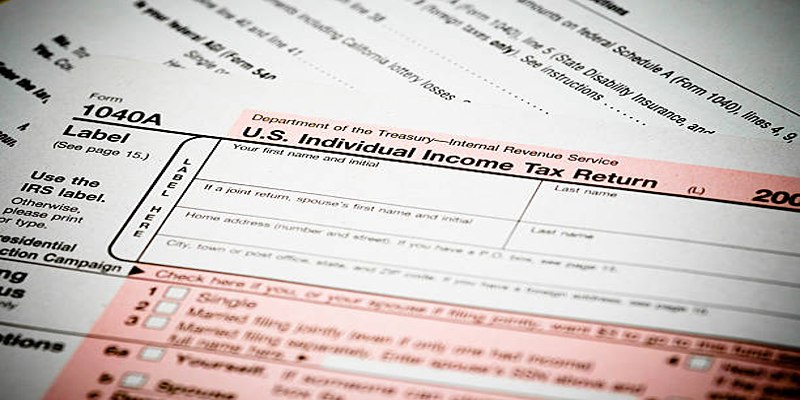Essential Information About Form 1040-A for Individual Taxpayers
Oct 06, 2024 By Triston Martin
Form 1040-A, often referred to as the "short form," is a simplified version of the standard Form 1040 and is used by individual taxpayers to file their annual income tax returns. This form is ideal for those with relatively uncomplicated tax situations, offering a streamlined process for reporting income, claiming dependents, and applying for certain tax credits and deductions. Form 1040-A caters to individuals with sources of income such as wages, salaries, tips, and certain types of interest and dividends. Understanding and correctly filing Form 1040-A can help ensure compliance with tax obligations while potentially maximizing eligible refunds and credits. This guide provides essential information to help you navigate and complete Form 1040-A efficiently.
Eligibility Criteria

To determine if you are eligible to file Form 1040-A, you must meet specific criteria set by the IRS.
- Your taxable income must be no more than $100,000.
- You must have only standard deductions and not itemized deductions.
- You cannot claim dependents other than yourself or your spouse if filing jointly.
- You can only report certain types of income, such as wages, salaries, tips, interest, dividends, and capital gains distributions.
If you meet these criteria, you can use Form 1040-A to file your tax return. However, if you do not meet all the requirements or your tax situation is more complex, you may need to file a regular Form 1040 instead.
Filing Instructions
Filing Form 1040-A involves several straightforward steps to ensure accurate and timely submission of your tax return. Follow these instructions to complete your form:
- Gather Necessary Documents: Collect all required documents, such as W-2s, 1099s, and any relevant records of interest or dividend income. Having these documents on hand will facilitate the preparation process.
- Fill Out Personal Information: Complete the top section with your personal information, including your name, Social Security number, and filing status. Ensure all entries are accurate to avoid processing delays.
- Report Income: Enter your income details in the appropriate sections. Form 1040-A allows you to report wages, salaries, tips, taxable interest, ordinary dividends, and capital gains distributions.
- Claim Deductions and Credits: In the sections designated for adjustments and tax credits, report any applicable deductions and credits, such as the Earned Income Tax Credit or education credits, to reduce your taxable income.
- Calculate Tax Liability: Use the IRS Tax Table to determine your tax liability based on your taxable income. Enter the calculated tax amount on the designated line.
- Determine Payments and Refunds: Report any federal income tax withheld on Line 7. Compare your total payments to your tax liability to determine if you owe additional tax or are due a refund.
- Sign and Date: Review the completed form for accuracy, then sign and date it. If filing jointly, both spouses must sign the form.
- Submit Form: Mail the completed Form 1040-A to the appropriate IRS address listed in the form instructions or file electronically for faster processing.
By following these steps carefully, you can ensure that your Form 1040-A is completed accurately, helping you meet your tax obligations and potentially take advantage of eligible refunds and credits.
Common Deductions and Credits
When filing Form 1040-A, several deductions and credits can help reduce your taxable income and potentially increase your refund. Here are some of the most common ones you might be eligible to claim:
1. Earned Income Tax Credit (EITC)
The Earned Income Tax Credit is designed to benefit low- to moderate-income working individuals and families. The amount of the credit varies based on your income, filing status, and number of qualifying children. Be sure to review the eligibility requirements to see if you qualify for the EITC.
2. Child Tax Credit
This credit is available to taxpayers with children under 17, designed to alleviate some of the expenses related to raising a family. For the 2024 tax year, eligible taxpayers can claim up to $2,000 per qualifying child, with up to $1,400 being refundable.
3. Education Credits
There are two types of education credits that you might be eligible for: the American Opportunity Credit and the Lifetime Learning Credit. These credits can help offset the costs of higher education by reducing your tax bill. The American Opportunity Credit offers up to $2,500 per eligible student, while the Lifetime Learning Credit can provide up to $2,000 per tax return.
4. Credit for the Elderly or Disabled
If you or your spouse are 65 years or older, or if you are under 65 and retired on permanent and total disability, you may qualify for this credit. The credit amount depends on your income and filing status.
5. Retirement Savings Contributions Credit (Saver's Credit)
This credit helps low- and moderate-income workers save for retirement. If you contribute to an IRA, 401(k), or other qualified retirement plan, you might be eligible for this credit, which can be up to $1,000 ($2,000 for married couples filing jointly).
6. Credit for Child and Dependent Care Expenses
If you paid for child care, or care for a disabled dependent or spouse, so that you could work or look for work, you may qualify for this credit. The amount of the credit is based on your income and the amount you spent on care services.
By understanding and utilizing these common deductions and credits, you can reduce your overall tax liability and maximize your potential refund when filing Form 1040-A.
Benefits of Using Form 1040-A

Using Form 1040-A offers several advantages to taxpayers, making it a preferred choice for those who meet the eligibility criteria. Here are some of the key benefits:
- Simplified Filing Process: Form 1040-A is less complex compared to the regular Form 1040, making it easier and faster to complete.
- Time Efficiency: The straightforward nature of Form 1040-A reduces the time needed to gather information, fill out the form, and review it for accuracy.
- Eligibility for Key Credits: Taxpayers can still claim several valuable tax credits, such as the Earned Income Tax Credit (EITC), Child Tax Credit, and education credits, which can significantly reduce tax liability.
- Fewer Sections to Complete: With fewer sections and schedules compared to Form 1040, the 1040-A form minimizes the potential for errors and reduces the overall workload for taxpayers.
- IRS Acceptance: As a standard IRS form, Form 1040-A is accepted for both paper and electronic filing, offering flexibility in submission methods.
- Cost Savings: The easier filing process can potentially lower the cost of tax preparation, whether filing independently or with the help of a tax professional.
- Accessibility: Form 1040-A is designed for taxpayers with straightforward tax situations, making it accessible for individuals who do not have extensive tax knowledge.
By leveraging these benefits, eligible taxpayers can effectively and efficiently manage their tax filing obligations using Form 1040-A.
Final Thoughts
Navigating the tax filing process can often feel overwhelming, but choosing the right form can simplify the task. For many taxpayers, Form 1040-A provides a streamlined and accessible option that balances ease of use with the ability to claim valuable deductions and credits. By understanding the steps to complete the form accurately and recognizing the common credits and deductions available, you can optimize your tax return and potentially increase your refund. Always remember to double-check your information before submission to avoid errors and delays. Whether you file independently or seek professional assistance, Form 1040-A offers a practical solution for straightforward tax situations, helping you fulfil your tax obligations with confidence.





